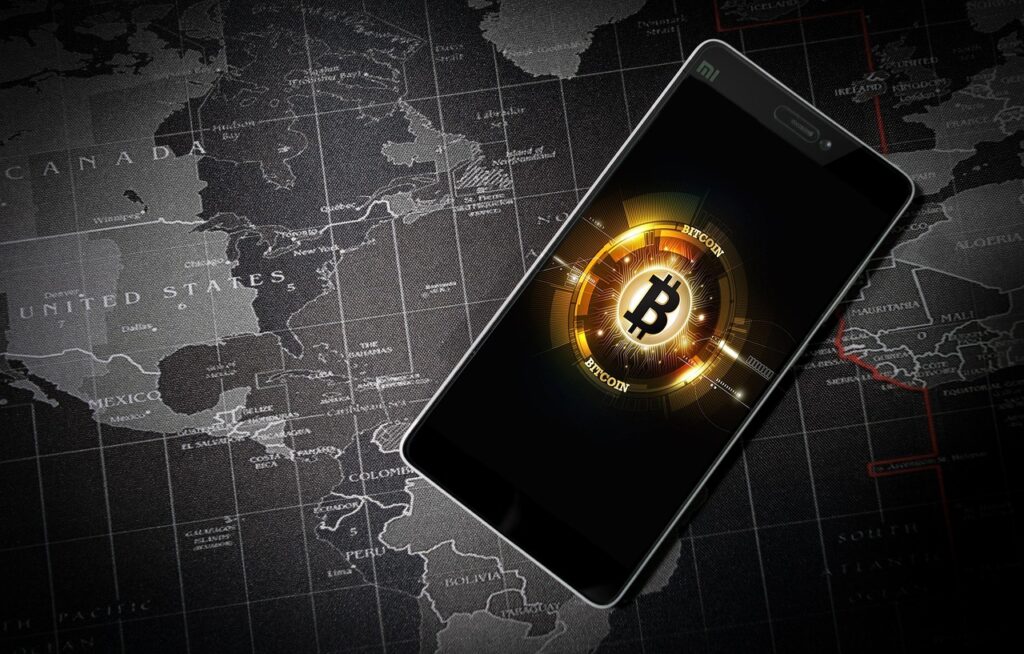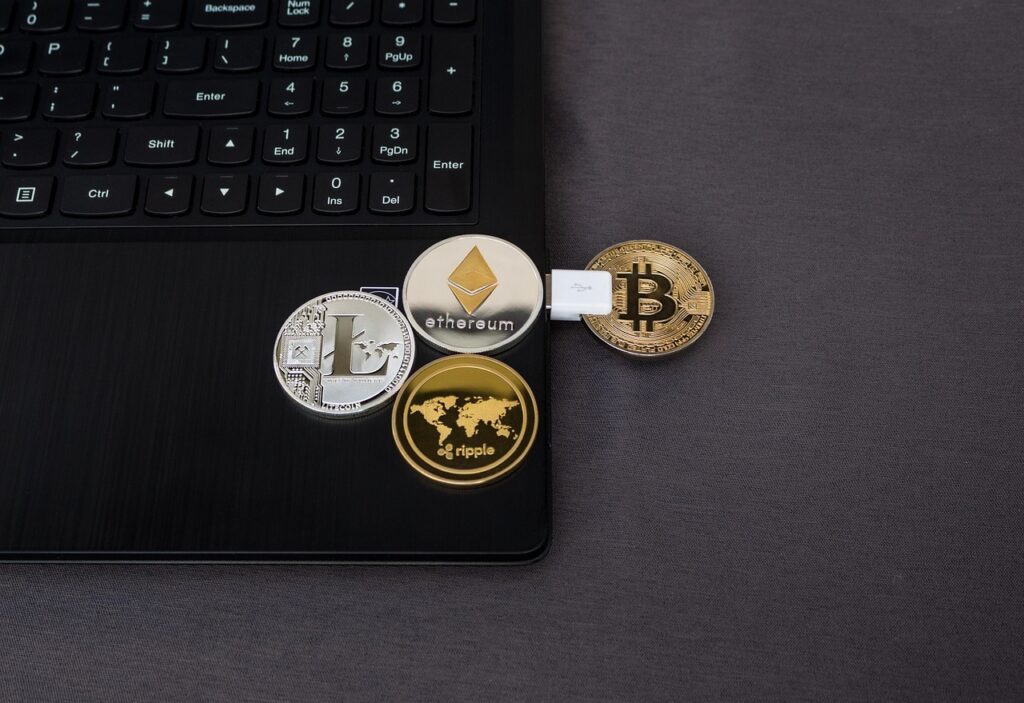The way goods move around the world is changing, especially for things that need to stay cold. Think about medicines, fresh food, or even certain chemicals. Keeping these items at the right temperature from where they’re made to where they end up is a big deal. It’s called cold chain logistics. But this system has its problems. That’s where blockchain comes in. This technology, known for its secure and clear records, is starting to make a real difference in the blockchain for the cold chain logistics market. It helps track products better and makes sure they’re handled correctly. This article will look at how blockchain is changing cold chain logistics and what the future holds.
Table of Contents
- 1 Introduction to Blockchain in Cold Chain Logistics
- 2 The Importance of Cold Chain Logistics in Modern Supply Chains
- 3 Challenges Facing the Traditional Cold Chain System
- 4 Temperature Excursions and Product Spoilage
- 5 Lack of Transparency and Visibility
- 6 Manual Errors and Data Manipulation
- 7 Regulatory Compliance Issues
- 8 Inefficient Dispute Resolution Among Stakeholders
- 9 How Blockchain Enhances Transparency and Traceability
- 10 Integrating IoT with Blockchain for Real-Time Monitoring
- 11 Benefits of Blockchain in Cold Chain Logistics
- 12 Case Studies: Successful Blockchain Implementations
- 13 Market Growth and Future Projections
- 14 Regional Insights: Global Adoption of Blockchain in Cold Chains
- 15 Regulatory Considerations and Compliance
- 16 Challenges and Limitations of Blockchain Integration
- 17 Interoperability Issues
- 18 Scalability Concerns
- 19 High Implementation Costs
- 20 Data Privacy and Security
- 21 Regulatory Uncertainty
- 22 Lack of Technical Expertise
- 23 The Role of SMEs in Blockchain Adoption
- 24 Overcoming Resource Constraints
- 25 Fostering Collaboration and Standardization
- 26 Tailored Solutions for Specific Needs
- 27 Demonstrating Value and Building Trust
- 28 Frequently Asked Questions
- 29 What is the role of blockchain in cold chain logistics?
- 30 What is the projected growth of the blockchain for the cold chain logistics market?
- 31 How does blockchain enhance the efficiency of cold chain operations?
- 32 What factors are driving the expansion of the blockchain for the cold chain logistics market?
- 33 Which regions are prominent in the adoption of blockchain for cold chain logistics?
- 34 How does IoT integration benefit blockchain in cold chain management?
- 35 What are the primary challenges in implementing blockchain in cold chain logistics?
- 36 How does blockchain assist in meeting regulatory compliance in cold chain logistics?
Introduction to Blockchain in Cold Chain Logistics
So, what’s the deal with blockchain and cold chain logistics? Well, it’s all about making sure things that need to stay cold, stay cold from start to finish. Think medicine, food, stuff like that. The current global supply chain blockchain for the cold chain logistics market is really pushing for better control over how these products are handled and delivered.
Imagine a world where every step of the cold chain is recorded, verified, and transparent. That’s the promise of blockchain. It’s not just about tracking; it’s about building trust and accountability into the system.
Why is this such a big deal? Because traditional methods can be messy, with lots of manual checks and paperwork. This can lead to errors, delays, and even spoiled products. Blockchain offers a way to streamline things, making the whole process more efficient and secure. It’s about time, right?
Here’s why blockchain is important in logistics for cold chains:
- Transparency: Everyone involved can see where a product is and what condition it’s in.
- Security: The data is tamper-proof, so you know it’s accurate.
- Efficiency: Automation reduces the need for manual checks and paperwork.
The Importance of Cold Chain Logistics in Modern Supply Chains
Cold chain logistics are super important these days. Think about it: we need to keep stuff like medicine and food at the right temperature from the moment it’s made until it gets to you. If something goes wrong, things can spoil, and that’s bad news for everyone. Cold chain logistics form the backbone of several critical industries, including healthcare, food and beverage, chemicals, and agriculture.
Imagine vaccines losing their effectiveness or fresh produce going bad before it even gets to the store. It’s a big deal, and that’s why getting this right is so crucial.Cold chain transport is essential for maintaining the freshness, safety, and usability of goods, ranging from supermarket products to hospital supplies.
Cold chain logistics is more than just keeping things cold. It’s about ensuring product integrity, reducing waste, and protecting public health. It’s a complex system that requires careful planning and execution.
Here’s why it matters:
- Reduces Waste: Proper temperature control prevents spoilage, which means less waste and more efficient use of resources.
- Protects Health: Keeping medicines and food safe prevents illness and ensures that people get what they need.
- Supports Global Trade: Cold chains allow us to move goods around the world, opening up new markets and opportunities.
Basically, without a good cold chain, a lot of things we take for granted just wouldn’t be possible. It’s a vital part of how the world works now.
Challenges Facing the Traditional Cold Chain System
Traditional cold chain systems, while vital, grapple with a range of issues that can compromise efficiency and product integrity. It’s not just about keeping things cold; it’s about maintaining a consistent, verifiable environment from origin to consumer. The cold chain logistics market is expected to grow significantly, but these challenges need addressing.
Temperature Excursions and Product Spoilage
Temperature fluctuations are a major headache. Even brief deviations from the required temperature range can ruin temperature-sensitive goods like vaccines and food. Current monitoring systems often lack the responsiveness needed to prevent spoilage, leading to waste and potential health risks. Imagine a shipment of medicine rendered useless because a truck’s refrigeration unit failed for a few hours – that’s a real possibility with current setups.
Lack of Transparency and Visibility
Knowing where your product is and what conditions it’s experiencing is surprisingly difficult. The cold chain involves many players across different locations, making it hard to track shipments in real-time. This lack of supply chain transparency creates information gaps and mistrust. Without clear visibility, verifying proper handling becomes nearly impossible, increasing the risk of spoilage and delays.
Manual Errors and Data Manipulation
Paper-based processes and manual data entry are still common, which introduces a high risk of human error. Plus, centralized data storage can be vulnerable to manipulation. This compromises the accuracy of shipment records and makes it difficult to trace the source of problems. It’s like trying to solve a mystery with missing or altered clues.
Regulatory Compliance Issues
Industries like pharmaceuticals and food face strict rules about storage and transportation. Messing up compliance can lead to big fines, legal trouble, or product recalls. Keeping accurate, tamper-proof audit trails is tough with traditional systems, making compliance reporting a real challenge. It’s a constant worry about whether you’re meeting all the requirements.
Inefficient Dispute Resolution Among Stakeholders
Disagreements over damaged goods, late deliveries, or temperature breaches are common. Resolving these disputes can be slow and complicated, often requiring extensive investigation and documentation. It’s a lot of back-and-forth, trying to figure out who’s responsible and what went wrong.
The current cold chain system faces significant hurdles. These include maintaining consistent temperatures, ensuring transparency, reducing manual errors, meeting regulatory demands, and resolving disputes efficiently. Addressing these challenges is crucial for minimizing waste, ensuring product safety, and maintaining consumer trust.
How Blockchain Enhances Transparency and Traceability
Blockchain tech is really changing how we see things in cold chain logistics. It’s not just about knowing where something is; it’s about knowing everything about its journey, and having proof. Think of it like this: every step, every temperature reading, every hand-off is recorded in a way that can’t be messed with. This makes it way easier to track products and be sure about their quality.
Blockchain’s ability to create a single, shared version of the truth is a game-changer. It cuts down on disagreements and makes it easier to spot problems quickly.
Here’s how it works:
- Real-Time Visibility: Everyone involved can see where a product is at any moment. This helps with planning and dealing with problems fast.
- Immutable Records: Once something is recorded on the blockchain, it can’t be changed. This builds trust and makes sure everyone is on the same page.
- Smart Contracts: These automatically enforce rules. For example, if the temperature goes out of range, the smart contract can send alerts or even stop a shipment.
With blockchain, you get a clear, unchangeable record of the entire process. This is super important for things like medicine or food, where safety is key. It also helps with things like proving compliance with regulations.
Imagine a shipment of vaccines. With blockchain, you can track the temperature every step of the way. If the temperature goes too high, you know right away and can take action. This reduces waste and makes sure patients get safe medicine. Plus, if there’s a problem, it’s way easier to figure out what happened and who’s responsible. This level of enhanced transparency is something traditional systems just can’t match.
Here are some of the benefits:
- Reduced spoilage
- Faster problem-solving
- Better compliance
Basically, blockchain makes the whole cold chain process more reliable and trustworthy. It’s a big step forward for ensuring product quality and safety.
Integrating IoT with Blockchain for Real-Time Monitoring
It’s no secret that keeping a close eye on products as they move through the cold chain is super important. When you mix the Internet of Things (IoT) with blockchain, you get something pretty powerful: real-time monitoring that’s reliable. Think about it – sensors tracking temperature, location, and humidity, all feeding data directly into a blockchain. This means everyone involved can see exactly what’s happening, when it’s happening, and trust that the information hasn’t been messed with.
This integration isn’t just about knowing where things are; it’s about knowing everything about their condition at every step of the way. It’s a game-changer for industries where product integrity is non-negotiable.
- Enhanced Visibility: IoT sensors provide continuous data streams, giving a complete picture of the product’s journey.
- Automated Alerts: Smart contracts can trigger alerts if conditions deviate from pre-set parameters, like temperature fluctuations.
- Improved Decision-Making: Real-time data allows for quick responses to potential problems, minimizing spoilage and waste.
The combination of IoT and blockchain creates a system where data is not only accessible but also verifiable. This builds trust among all parties involved, from manufacturers to consumers.
Let’s look at how this tech is used. Imagine a shipment of vaccines. IoT sensors constantly monitor the temperature inside the container. This data is then recorded on a blockchain, creating a permanent, unchangeable record. If the temperature goes outside the acceptable range, an alert is automatically sent to the relevant parties. This allows them to take immediate action, preventing the vaccines from being ruined. This real-time data is a huge step up from traditional methods, which often rely on manual checks and are prone to errors.
This kind of system also makes it easier to comply with regulations. Because all the data is stored on a blockchain, it’s easy to provide proof of compliance to regulatory bodies. This can save companies a lot of time and money, and it can also help them avoid penalties.
Benefits of Blockchain in Cold Chain Logistics
Blockchain tech is making waves, and the cold chain is no exception. It’s not just hype; there are real, tangible advantages to using blockchain in this space. Let’s break down some of the key benefits.
One of the biggest advantages is the enhanced security it brings to the table.
- Improved Traceability: Knowing exactly where a product is and what conditions it’s been exposed to is huge. Blockchain provides a clear, immutable record of the product’s journey.
- Increased Transparency: All parties involved can see the same information, reducing disputes and building trust. This is especially important when dealing with sensitive goods.
- Reduced Fraud: Tampering with data becomes incredibly difficult, minimizing the risk of counterfeit products entering the supply chain. This is a big win for consumer safety and brand protection.
Think about it: with traditional systems, data can be altered or lost. Blockchain’s decentralized nature makes it much harder to manipulate, providing a more reliable and secure record.
Here’s a quick look at how blockchain impacts different aspects of the cold chain:
| Feature | Traditional System | Blockchain System |
| Data Security | Vulnerable | Highly Secure |
| Transparency | Limited | Full Transparency |
| Traceability | Complex | Simplified and Automated |
| Dispute Resolution | Time-Consuming | Faster and More Efficient |
Blockchain shipping logistics can really streamline things. It’s about making the whole process more efficient and reliable. Plus, with stricter regulations coming into play, like the US Drug Supply Chain Security Act (DSCSA), blockchain can help companies stay compliant by providing automated, immutable records. It’s a win-win.
Case Studies: Successful Blockchain Implementations
It’s one thing to talk about how great blockchain could be, but what about real-world examples? Let’s look at some companies that have actually put blockchain to work in their cold chain logistics and seen some positive results. These blockchain supply chain development examples show the potential for improving transparency and efficiency.
Seeing how others have successfully integrated blockchain can provide valuable insights and encourage more businesses to explore this technology.
Market Growth and Future Projections
Okay, so let’s talk about where this whole blockchain in cold chain thing is headed. It’s not just a flash in the pan; people are expecting some serious growth. I saw one report that said the global cold chain market is supposed to jump from around USD 228.3 billion this year to over USD 372.0 billion in just a few years. That’s a pretty big deal.
It’s not just about the money, though. This growth shows that companies are starting to see the real value in using blockchain to keep track of their temperature-sensitive stuff. They want to know where their products are, if they’re still good, and if anyone’s messed with them along the way.
And it’s not just one report saying this. I’ve seen others predicting similar trends. Here’s what I’ve gathered:
- Increased Adoption: More and more companies are going to start using blockchain as they realize how much it can help.
- Technological Advancements: The technology itself is getting better, making it easier to use and more effective.
- Regulatory Pressure: Governments are starting to crack down on food safety and things like that, which pushes companies to find better ways to track their products.
I even saw some numbers estimating the market could reach almost USD 3 trillion by 2037, with a CAGR of 15%. That’s huge! It makes sense, though. Think about it: more people, more demand for fresh food and medicine, and more need to make sure everything stays safe during shipping. Blockchain is looking like a pretty good solution to a lot of those problems.
Regional Insights: Global Adoption of Blockchain in Cold Chains
It’s interesting to see how different parts of the world are embracing blockchain for cold chain logistics. Some regions are way ahead, while others are just starting to explore the possibilities. Let’s take a look at what’s happening around the globe.
North America is currently leading the charge. The United States holds a significant portion of the market share. They’re pushing the boundaries with new tech and innovative solutions. Europe isn’t far behind, with many countries investing heavily in digital upgrades for their supply chains. They see the value in blockchain for cold chain logistics and are working hard to implement it.
Asia Pacific is where things get interesting. Countries like China and India are experiencing rapid growth in this area. The demand for better cold chain management is huge, and blockchain is seen as a key solution. The Middle East and Latin America are also starting to pay attention. They’re working on improving their supply chains, but adoption is a bit slower compared to North America and Europe. Still, the potential is there.
The European Union is putting money into blockchain and digital infrastructure. This is to make supply chains stronger. It shows they believe blockchain can fix problems in the supply chain.
Here’s a quick look at the regional market share:
| Region | Market Share (2024) |
| North America | >40% |
| Europe | Significant |
| Asia Pacific | Growing Rapidly |
| Middle East | Emerging |
| Latin America | Emerging |
The adoption of blockchain in cold chains is a global trend. As cryptocurrency is evolving, we can expect to see even more growth and innovation in the years to come.
Regulatory Considerations and Compliance
Navigating the regulatory landscape is a big deal when you’re talking about blockchain in cold chain logistics. It’s not just about the tech; it’s about making sure everything meets the rules and laws in place. This can get tricky, especially since regulations vary a lot from place to place.
One of the main things is data privacy. With blockchain, you’re dealing with a ton of data, and you need to make sure you’re following rules like GDPR. Then there’s the whole issue of data security – keeping that information safe from unauthorized access is super important. Plus, industries like pharmaceuticals and food have really strict rules about how products are stored and moved, so you have to make sure your blockchain system helps you meet those standards.
It’s important to remember that regulatory compliance isn’t a one-time thing. It’s an ongoing process that requires constant monitoring and adaptation. As regulations change, your blockchain system needs to be flexible enough to keep up.
Here are some key areas to keep in mind:
- Data Privacy: Following regulations like GDPR and CCPA is a must.
- Data Security: Protecting sensitive data from breaches and unauthorized access.
- Industry-Specific Regulations: Meeting the specific requirements for industries like pharmaceuticals and food.
Blockchain’s ability to provide a transparent and tamper-proof record can be a huge help in meeting these regulatory demands. But it’s important to get advice from legal and compliance experts to make sure you’re doing everything right. For example, you might need RWA Legal Consulting to help with asset tokenization projects.
Challenges and Limitations of Blockchain Integration
While blockchain offers a lot for cold chain logistics, it’s not without its hurdles. Getting it all to work smoothly can be tricky, and there are some real limitations to consider before jumping in.
Interoperability Issues
One of the biggest headaches is getting different blockchain systems to talk to each other. Many supply chains already use various platforms, and making them all compatible for standardized data integration is essential. If they can’t communicate, the whole transparency thing falls apart. Imagine trying to track a shipment if one part of the chain uses one system and another uses something completely different. It’s a mess.
Scalability Concerns
Blockchain can sometimes struggle to handle large amounts of data quickly. As the cold chain grows, the blockchain needs to keep up. If it can’t process transactions fast enough, you end up with bottlenecks and delays. This is a big deal when you’re dealing with perishable goods that need to be tracked in real-time. Think about the volume of data generated by temperature sensors on thousands of shipments – it adds up fast.
High Implementation Costs
Setting up a blockchain system isn’t cheap. You’ve got the cost of the technology itself, plus the expense of integrating it with existing systems and training staff. For smaller companies, this can be a major barrier. It’s not just about buying the software; it’s about completely overhauling how you do things. You need the right blockchain platform to suit your business requirements.
Data Privacy and Security
While blockchain is generally secure, it’s not foolproof. There are still risks of data breaches or manipulation, especially if the system isn’t set up correctly. Also, you need to think about data privacy regulations. Some information might be sensitive, and you need to make sure you’re not violating any laws by putting it on a blockchain. It’s a balancing act between transparency and protecting confidential information.
Regulatory Uncertainty
Regulations around blockchain are still evolving, and this can create uncertainty for companies. Different countries have different rules about data privacy and cross-border data usage. This makes it hard to implement blockchain on a global scale. Companies often face compliance challenges in different jurisdictions. The U.S. FDA’s ongoing guidelines on blockchain usage in the pharmaceutical sector underscore regulatory efforts to address these challenges but also reveal the hurdles.
Blockchain’s reliance on connected capabilities related to blockchain in logistics means that any weak link in the chain can compromise the entire system. This includes vulnerabilities in IoT devices, network connectivity, or even human error. It’s a reminder that technology alone isn’t a silver bullet; it needs to be combined with robust security protocols and careful planning.
Lack of Technical Expertise
Blockchain is still a relatively new technology, and there aren’t a lot of people with the skills to implement and maintain it. This can make it hard to find qualified staff and can drive up costs. You need people who understand not just blockchain, but also cold chain logistics and data management. It’s a specialized skillset that’s in high demand.
Here’s a quick summary of the challenges:
- Interoperability with existing systems
- Scalability to handle large data volumes
- High upfront implementation costs
- Data privacy and security concerns
- Regulatory uncertainty and compliance issues
The Role of SMEs in Blockchain Adoption
Small and medium-sized enterprises (SMEs) play a significant, though sometimes overlooked, role in the adoption of blockchain technology within cold chain logistics. While large enterprises often have the resources to implement complex systems, SMEs can be more agile and innovative in their approach. However, they also face unique challenges.
Overcoming Resource Constraints
One of the biggest hurdles for SMEs is limited resources. Implementing blockchain solutions can require significant upfront investment in technology, training, and infrastructure. SMEs often need to be creative in finding ways to overcome these constraints. This might involve:
- Seeking government grants or subsidies designed to encourage technology adoption.
- Partnering with larger companies or industry consortia to share costs and expertise.
- Adopting cloud-based blockchain solutions reduces the need for expensive on-premise infrastructure.
- Focusing on specific, high-impact use cases to maximize the return on investment.
Fostering Collaboration and Standardization
SMEs can benefit greatly from collaboration with other businesses in the cold chain. By working together, they can create standardized protocols and data formats that make it easier to share information and track products across the supply chain. This collaboration can also help to build trust and transparency among all stakeholders.
Collaboration is key. SMEs should actively participate in industry initiatives and working groups to develop common standards and best practices for blockchain implementation. This will not only make it easier for them to adopt the technology but also ensure that their solutions are interoperable with those of other companies.
Tailored Solutions for Specific Needs
Unlike large enterprises that may require complex, enterprise-wide blockchain solutions, SMEs can often benefit from more focused and tailored applications. For example, a small seafood distributor might use blockchain to track the origin and temperature of its products, providing customers with assurance of quality and safety. A local farm could use blockchain supply chain development to manage its inventory and track shipments to local restaurants.
Demonstrating Value and Building Trust
For SMEs, demonstrating the value of blockchain is crucial for gaining buy-in from customers, suppliers, and other stakeholders. This might involve:
- Providing real-time tracking data to customers, showing them the location and condition of their products.
- Using blockchain to verify the authenticity of products, preventing counterfeiting and fraud.
- Improving efficiency and reducing waste by optimizing inventory management and logistics.
By showcasing these benefits, SMEs can build trust and establish themselves as leaders in the adoption of blockchain technology in cold chain logistics.
Frequently Asked Questions
What is the role of blockchain in cold chain logistics?
Blockchain technology offers a secure and transparent way to record every step of a product’s journey through the cold chain. This includes details like temperature, humidity, and handling, ensuring that sensitive goods like medicines and food remain in good condition from where they are made to where they are delivered.
What is the projected growth of the blockchain for the cold chain logistics market?
The cold chain logistics market is expected to grow significantly. It is predicted to reach a value of 1,867.6 billion U.S. dollars by 2034, increasing from 478.0 billion U.S. dollars in 2024. This shows a strong yearly growth rate of 14.6% from 2025 to 2034.
How does blockchain enhance the efficiency of cold chain operations?
Blockchain helps improve cold chain operations by making sure that all information is accurate and cannot be changed. This means everyone involved, from the manufacturer to the customer, can see exactly what happened to the product, which builds trust and reduces mistakes.
What factors are driving the expansion of the blockchain for the cold chain logistics market?
The main reasons for this growth are the increasing need to track products in real-time, ensure that information is clear and correct, and maintain the quality of goods that need to be kept at certain temperatures.
Which regions are prominent in the adoption of blockchain for cold chain logistics?
North America currently leads the market, holding more than 40% of the share. The United States, in particular, is expected to see its earnings grow from 179.3 billion U.S. dollars in 2024.
How does IoT integration benefit blockchain in cold chain management?
Integrating Internet of Things (IoT) devices with blockchain allows for constant monitoring of conditions like temperature and location. This data is then securely recorded on the blockchain, providing a complete and trustworthy history of the product’s environment.
What are the primary challenges in implementing blockchain in cold chain logistics?
While blockchain offers many advantages, challenges include the initial cost of setting up the system, the need for everyone in the supply chain to agree to use it, and making sure the system can handle a large amount of data as the market grows.
How does blockchain assist in meeting regulatory compliance in cold chain logistics?
Blockchain makes it easier to meet strict rules and laws because it keeps a clear and unchangeable record of all activities. This helps companies show that they are following all necessary guidelines for handling temperature-sensitive products.













